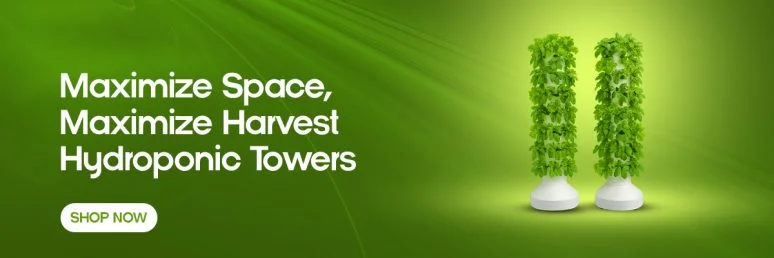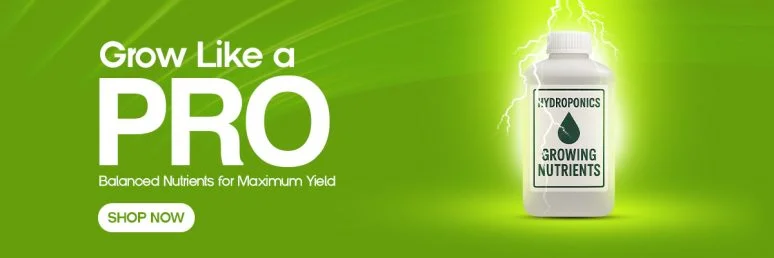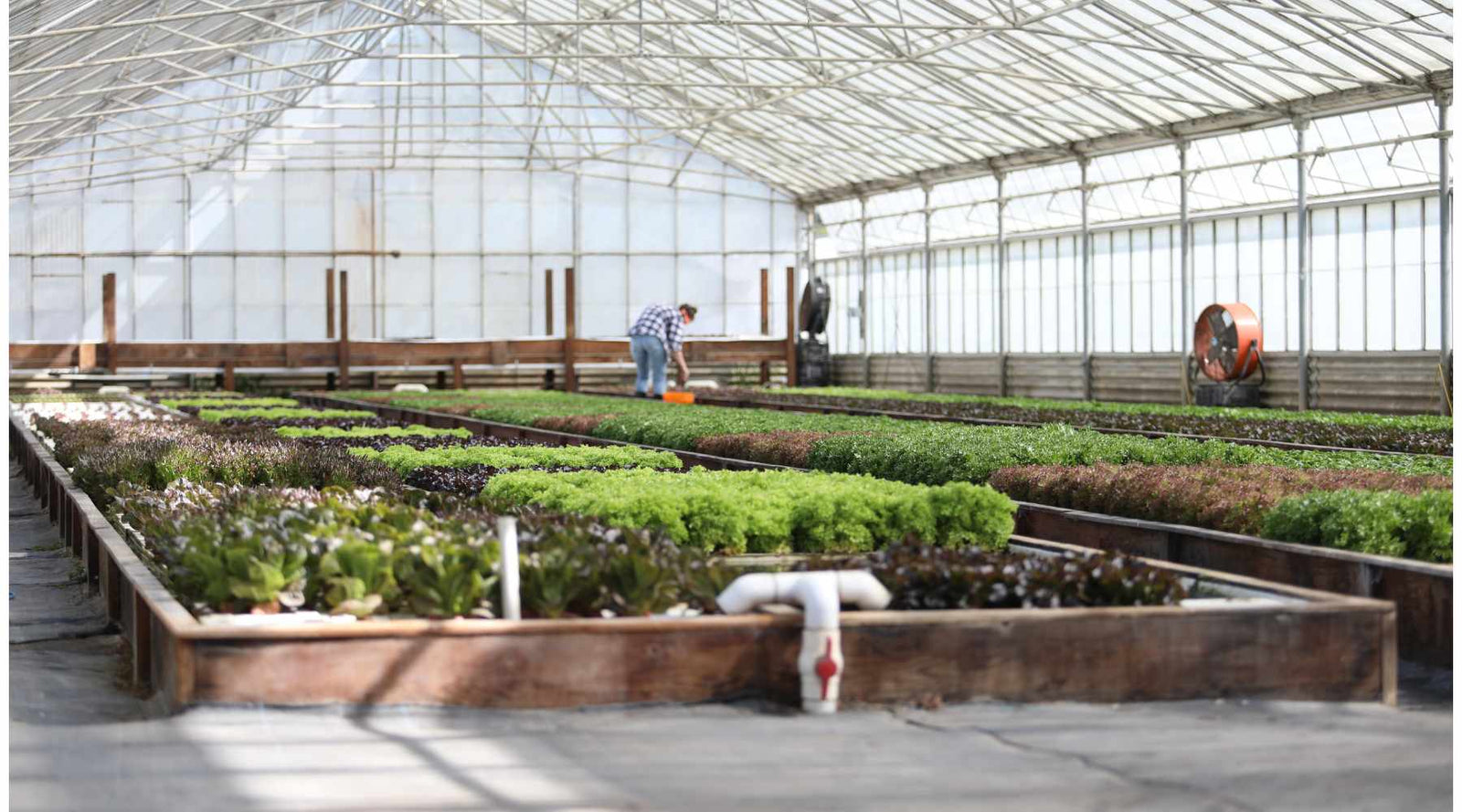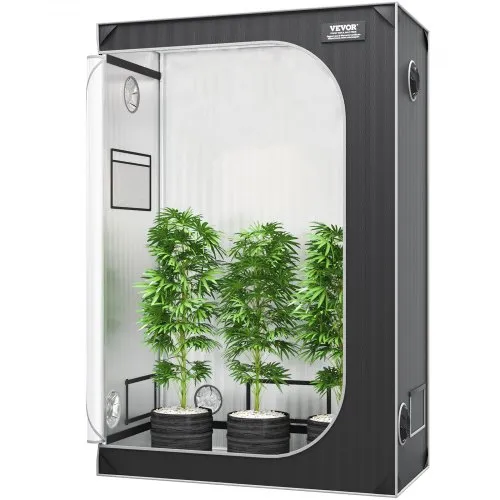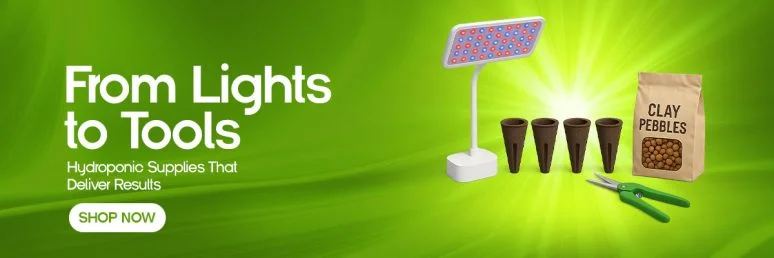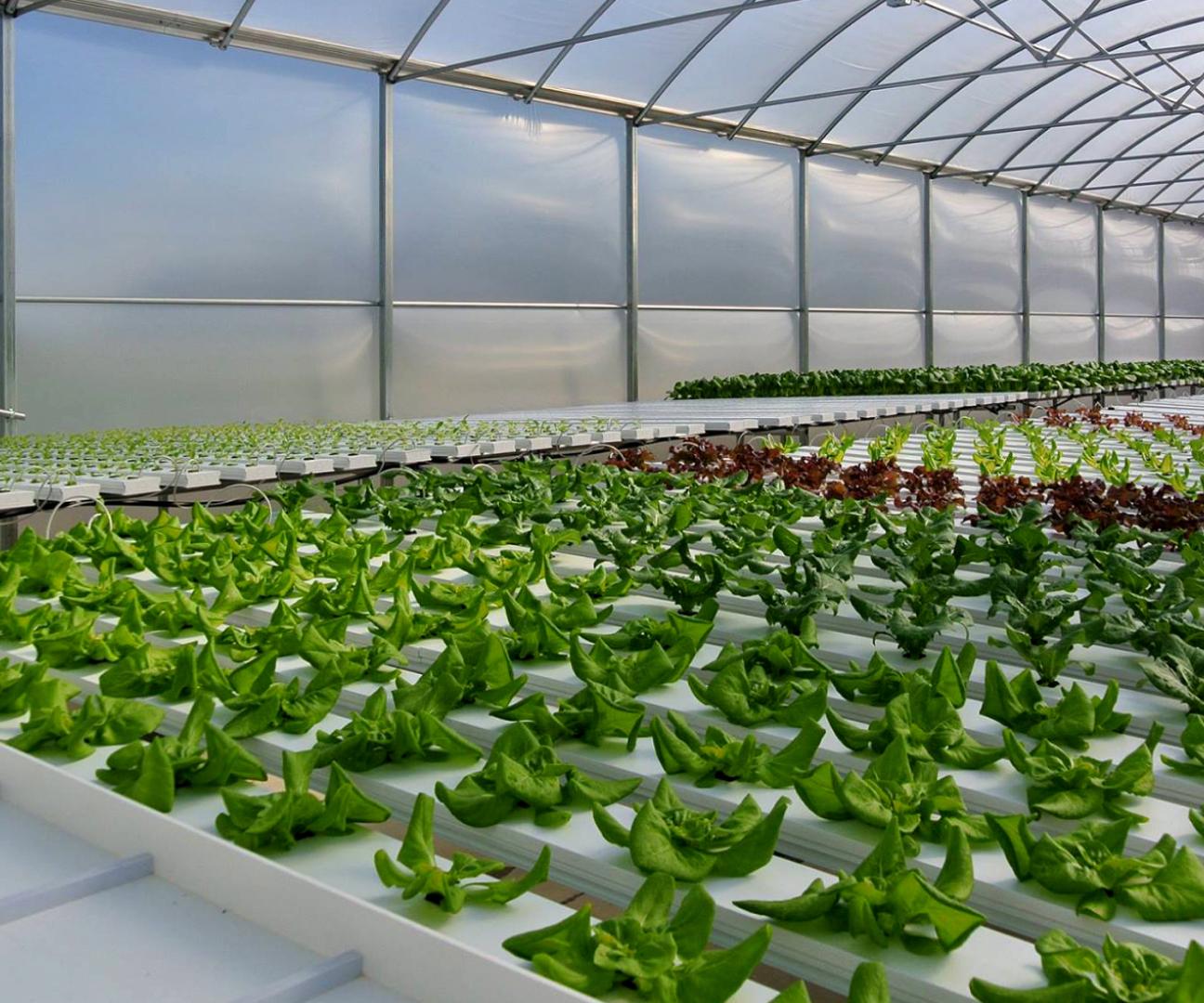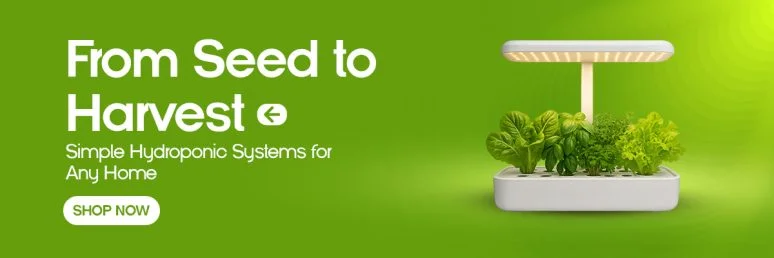Is A Grow Tent Better Than A Greenhouse? Which Is Best For You?
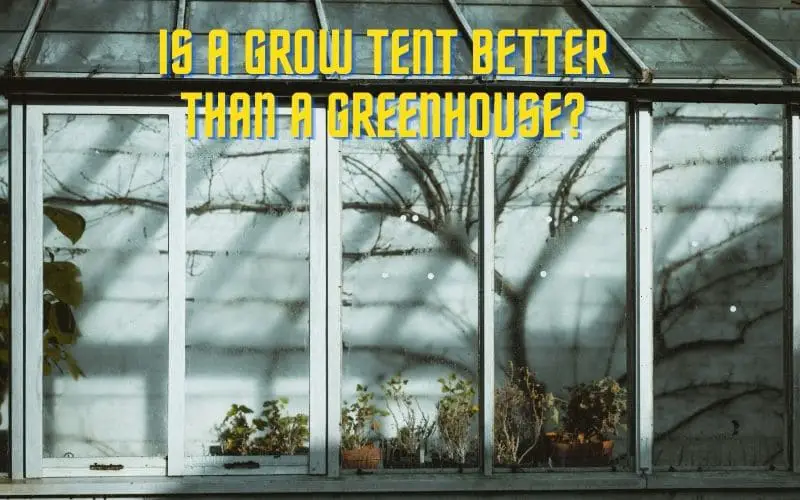
Article-at-a-Glance
- Grow tents offer superior climate control and light manipulation in a compact space, making them ideal for urban gardeners with limited room
- Greenhouses harness natural sunlight and provide more growing space, but require more maintenance and are subject to seasonal changes
- Your climate, available space, budget, and specific plant needs should guide your decision between these two growing environments
- Grow tents generally cost less initially but have higher operating costs, while greenhouses require a larger upfront investment but lower long-term expenses
- Happy Hydro offers specialized solutions for both growing environments, helping you make the most of whichever option fits your gardening goals
The great indoor-outdoor growing debate has perplexed gardeners for years. If you’re torn between setting up a grow tent or building a greenhouse, you’re not alone. Each option offers distinct advantages for different growing needs, spaces, and gardening goals.
While both environments give you more control than traditional outdoor gardening, they differ significantly in how they help your plants thrive. Happy Hydro’s selection of grow tents provides indoor gardeners with complete environmental control, perfect for those looking to grow year-round regardless of outside conditions. Understanding the key differences between these growing environments will help you make an informed decision that aligns with your gardening ambitions.
Let’s dive into the grow tent vs greenhouse showdown to determine which option might be best for your specific situation, growing goals, and available resources.
What Exactly Is a Grow Tent?
“Amazon.com: JungleA 4×4 Grow Tent, High …” from www.amazon.com and used with no modifications.
A grow tent is essentially a portable, self-contained growing environment designed for indoor use. Think of it as a miniature, fabric-covered grow room that can be set up virtually anywhere in your home—basements, spare bedrooms, closets, or even living rooms. These specialized tents feature a sturdy canvas exterior with a highly reflective interior lining that maximizes light efficiency for your plants. If you’re wondering why use a grow tent for hydroponics, they offer controlled conditions that are ideal for plant growth.
The structure typically includes a metal frame that provides stability and support for hanging lights, fans, carbon filters, and other equipment. Multiple ports and vents allow for proper ventilation, cable management, and easy access for maintenance. Grow tents come in various sizes, from small 2’x2′ models perfect for seedlings or a few plants to larger 10’x10′ versions that can accommodate dozens of plants.
Complete Light Control in Any Room
One of the most significant advantages of grow tents is the ability to control light with precision. The tent’s lightproof design creates a sealed environment where you can manipulate light cycles exactly as needed for different growing phases. This is particularly important for photoperiod-sensitive plants that require specific light/dark schedules to trigger flowering or fruiting.
The reflective interior walls maximize light efficiency by bouncing photons back onto your plants instead of being absorbed by room walls. This means you can achieve better growth with less powerful lighting systems, potentially saving on electricity costs. For gardeners growing light-sensitive plants or those requiring specific light cycles, this level of control is invaluable and simply impossible to achieve in a traditional greenhouse setting.
Perfect Climate Management Year-Round
Grow tents excel at maintaining consistent growing conditions regardless of external weather or seasonal changes. Inside your tent, you’re the weather god—controlling temperature, humidity, and even CO₂ levels with precision equipment. This climate control is achievable even in challenging spaces like basements or attics that might otherwise be unsuitable for growing plants.
The enclosed environment makes it significantly easier to maintain higher humidity levels that many tropical plants require without affecting the rest of your living space. You can create desert conditions for succulents in winter or tropical rainforest environments for orchids in the middle of a dry summer. This consistency leads to healthier plants, predictable growth patterns, and more reliable harvests throughout the year.
“The main advantage of grow tents is control. When you can precisely manage light, temperature, and humidity regardless of outside conditions, you can grow virtually anything, anytime, anywhere.”
Space-Saving Design for Urban Gardeners
For urban dwellers or those with limited outdoor space, grow tents offer a practical solution to garden year-round without requiring a yard. Their compact, self-contained design fits into apartments, condos, or homes where outdoor growing simply isn’t an option. Most tents can be disassembled when not in use, making them flexible for seasonal needs or temporary growing projects.
This space efficiency extends to vertical growing potential as well. With the ability to install shelving or use the tent’s frame for support, you can maximize growing space by stacking plants vertically—something much harder to achieve efficiently in a traditional greenhouse. For small-space gardeners looking to maximize yields from minimal square footage, a well-organized grow tent system can produce impressive results.
Inside the Greenhouse: Nature’s Growing Partner
“How to Build a Hydroponic Greenhouse: A …” from hgshydro.com and used with no modifications.
Greenhouses represent a fundamentally different approach to controlled environment agriculture. Rather than creating an artificial growing space, greenhouses enhance natural growing conditions by trapping heat and extending the growing season. These structures typically feature transparent walls and roofs made of glass or polycarbonate that allow sunlight to enter while protecting plants from harsh weather conditions.
Unlike the fully artificial environment of a grow tent, greenhouses work with nature—amplifying the sun’s power while buffering against extreme temperatures and weather. This creates a semi-controlled environment where plants can thrive with less artificial intervention than indoor growing requires. Greenhouses range from small backyard hobby structures to massive commercial operations covering acres of land. For those interested in a more controlled environment, consider why use a grow tent for hydroponics.
3. Perfect for Apartment Gardening
Urban dwellers rejoice! Grow tents are the ultimate solution for apartment gardeners who lack outdoor space but still crave fresh homegrown produce. These self-contained units fit perfectly in spare rooms, closets, or even living areas without disrupting your living space. The sealed environment prevents soil, water, and plant matter from creating messes throughout your home while allowing you to maintain a thriving garden in the most unlikely places. For more tips, check out this guide on why use a grow tent for hydroponics.
4. Lower Initial Investment
When comparing startup costs, grow tents offer a significantly lower barrier to entry than building a greenhouse. A complete tent setup with lighting, ventilation, and basic growing equipment typically costs between $300-800 for a quality system. This budget-friendly approach makes indoor growing accessible to beginners and those testing the waters before making larger investments. Plus, the modular nature of grow tent setups allows you to expand or upgrade components individually as your experience and needs evolve.
5. Year-Round Growing Regardless of Climate
Perhaps the most compelling advantage of grow tents is their complete independence from outside weather conditions. Whether you’re facing sub-zero temperatures, scorching heat waves, or torrential downpours, your plants remain blissfully unaware in their protected environment. This climate immunity means you can grow tropical plants in Alaska or desert succulents in rainy Seattle without missing a beat. For more insights on this topic, check out this discussion on grow tents vs greenhouses.
The ability to grow continuously throughout the year also means multiple harvest cycles for annual plants. While outdoor gardens or greenhouses might produce one or two harvests annually, grow tent gardeners can achieve 4-6 harvest cycles for many crops, dramatically increasing yearly yields from the same amount of growing space.
This independence from natural growing seasons provides tremendous freedom in what and when you grow. You can start summer vegetables in the dead of winter, harvest fresh herbs year-round, or maintain a perpetual garden that’s always producing something delicious regardless of what the calendar says.
| Feature | Grow Tent | Greenhouse |
|---|---|---|
| Light Source | Artificial (LED, HPS, etc.) | Primarily natural sunlight |
| Climate Control | Complete artificial control | Semi-controlled/weather dependent |
| Growing Space | Limited (2x2ft to 10x10ft typically) | Expandable (small hobby to commercial) |
| Initial Cost | $300-800 for complete setup | $1,000-10,000+ for structure |
| Operating Cost | Higher (electricity for lights/fans) | Lower (minimal supplemental energy) |
Understanding these fundamental differences helps clarify which option aligns better with your specific growing goals, available space, and budget constraints. While grow tents offer precision control in limited spaces, greenhouses provide a more natural growing environment with greater capacity for expansion. For more insights on why to use a grow tent, check out this guide on grow tents for hydroponics.
4 Major Benefits of Greenhouse Growing
“Hydroponics 101: A Beginner’s Guide to …” from www.bootstrapfarmer.com and used with no modifications.
Greenhouses have endured as a growing solution for centuries, and for good reason. These structures offer unique advantages that indoor growing environments simply cannot match, particularly for gardeners with suitable outdoor space and a connection to natural growing cycles. Let’s explore the most compelling benefits that make greenhouses the preferred choice for many serious plant enthusiasts.
1. Natural Sunlight Means Lower Energy Bills
The most significant advantage greenhouses offer is their use of natural sunlight as the primary light source for plant growth. This natural approach drastically reduces or eliminates the need for expensive artificial lighting systems that drive up electricity costs in grow tent setups. For sun-loving plants like tomatoes, peppers, and most flowering ornamentals, natural sunlight delivers a full spectrum of light that artificial systems often struggle to replicate completely.
This natural light advantage translates directly to your utility bills. While grow tents might add $50-150 monthly to your electricity costs for lighting alone, greenhouses require minimal supplemental lighting except during the shortest winter days. For gardeners growing light-hungry plants or operating on a larger scale, these savings can amount to thousands of dollars annually.
2. Greater Growing Capacity
Greenhouses simply offer more room to grow. Even modest backyard greenhouses typically provide 100-400 square feet of growing space—far exceeding what’s possible with most indoor tent setups. This expanded capacity allows for larger plants, more varieties, and growing methods that require more space like trellising, vertical systems, or companion planting arrangements.
The height advantage cannot be overstated either. Most greenhouses provide 8-12 feet of vertical growing space, accommodating vining plants, fruit trees, or tall crops that would quickly outgrow even the tallest grow tents. This three-dimensional growing potential means you can cultivate a greater diversity of plants simultaneously, creating more complex and productive growing systems than possible in the confined space of a tent.
3. Extends Natural Growing Seasons
Greenhouses excel at bridging the gap between indoor and outdoor growing by extending your natural growing season significantly at both ends. In most climates, a well-designed greenhouse can add 2-3 months to the beginning and end of your growing season without requiring extensive supplemental heating or cooling. This extended season means earlier spring planting, later fall harvests, and protection from unexpected frost events that might damage outdoor gardens. For those interested in alternative growing methods, understanding the requirements of a hydroponic system can also be beneficial.
This season extension works with natural light cycles and temperature patterns rather than replacing them entirely. Plants still experience some seasonal variation, which many gardeners find produces better flavor in edibles and more natural growth patterns in ornamentals compared to the artificial consistency of indoor environments. For gardeners who value working with natural cycles while gaining additional growing time, greenhouses offer the perfect middle ground.
4. Better Air Circulation for Plant Health
Greenhouses naturally provide superior air circulation compared to the confined environment of grow tents. This improved airflow reduces humidity-related problems like powdery mildew, botrytis, and other fungal issues that commonly plague indoor growing environments. The larger volume of air acts as a buffer against rapid temperature and humidity fluctuations, creating a more stable growing environment that many plants prefer.
The Reality Check: Downsides You Should Know
“Hydroponic Grow Tent Kit Indoor …” from www.ebay.com and used with no modifications.
Before you commit to either growing solution, it’s essential to understand the potential drawbacks that might impact your gardening experience. Neither option offers a perfect growing environment, and the limitations of each might influence which choice makes more sense for your specific situation.
Being realistic about these challenges helps set appropriate expectations and allows you to implement solutions proactively rather than struggling with unforeseen issues after you’ve already invested time and money. Let’s examine the potential frustrations associated with each growing method.
Grow Tent Limitations That Might Frustrate You
While grow tents offer impressive environmental control, they come with significant limitations that can challenge even experienced indoor gardeners. The confined space quickly becomes a double-edged sword as your plants mature and your ambitions expand beyond the tent’s physical constraints. Understanding these limitations helps determine if a grow tent aligns with your long-term growing goals.
- Electricity costs can become prohibitive, especially with high-intensity lighting systems running 12-18 hours daily
- Limited space restricts plant quantity and size, making it difficult to grow larger varieties
- Constant equipment maintenance including filter replacements, fan cleaning, and light adjustments
- Noise from fans and ventilation systems can become irritating, especially in living spaces
- Heat management challenges during summer months can require additional cooling solutions
Perhaps the most significant drawback is the ongoing operational cost. Unlike greenhouses that primarily require an upfront investment, grow tents demand continuous inputs of electricity, replacement parts, and growing media. These expenses add up quickly, especially for larger setups or when growing light-hungry plants that require intense artificial illumination. For more insights on choosing between these options, you can explore a detailed comparison on Grow Tent vs Green House Tent.
The limited space also forces difficult choices about which plants to grow. While a greenhouse might accommodate dozens of different varieties simultaneously, grow tent gardeners must carefully select which few plants deserve the valuable real estate. This limitation can be particularly frustrating for enthusiastic gardeners who constantly discover new varieties they want to try.
Greenhouse Challenges That Could Derail Your Garden
Greenhouses aren’t without their own set of challenges, many of which stem from their semi-controlled nature that remains partially vulnerable to external conditions. Temperature management represents the primary struggle for most greenhouse gardeners, as these structures can quickly overheat on sunny days or lose heat rapidly during cold nights. Without proper ventilation, shading systems, and potentially supplemental heating, your greenhouse can quickly become unsuitable for plant growth during seasonal extremes.
How to Choose: Your Growing Environment Decision Guide
“VEVOR 2×4 Grow Tent, 122 x 61 x 183 cm …” from eur.vevor.com and used with no modifications.
Making the right choice between a grow tent and greenhouse depends on honestly assessing several key factors specific to your situation. Neither option universally outperforms the other—each excels in different contexts and for different gardening goals. The ideal growing environment for you depends on carefully weighing these considerations against your personal priorities. For instance, understanding why use a grow tent for hydroponics can be crucial in making an informed decision.
Consider this decision as an investment in your gardening future rather than simply a purchase. The right environment will enhance your growing experience, while the wrong choice might create unnecessary frustrations that diminish your gardening enjoyment. Let’s explore the most important factors that should influence your decision.
Climate Considerations: Your Location Matters
Your local climate plays a crucial role in determining which growing environment makes more sense. In regions with extreme temperatures, limited sunlight, or short growing seasons, grow tents offer year-round consistency that greenhouses struggle to maintain without significant additional infrastructure. Conversely, in moderate climates with abundant sunshine, greenhouses capitalize on natural conditions while providing just enough protection from occasional weather extremes.
Consider not just average conditions but also extremes—those rare but impactful weather events that can destroy crops. If you live in an area prone to hailstorms, hurricanes, or extended freezes, greenhouses require additional reinforcement and backup systems that significantly increase their cost and complexity. In these challenging climates, grow tents offer greater security and predictability.
- Northern regions (Zones 2-5): Grow tents generally outperform greenhouses during long, cold winters
- Moderate climates (Zones 6-8): Either option works well, with greenhouses providing excellent value
- Southern/tropical regions (Zones 9-11): Greenhouses excel but require proper ventilation and cooling
- Arid regions: Greenhouses help maintain humidity, but shade cloth is essential to prevent overheating
- Coastal areas: Corrosion-resistant materials are crucial for greenhouse longevity
Remember that microclimates within your property can significantly impact greenhouse performance. South-facing slopes, wind-protected areas, or locations that receive reflected heat from buildings can create ideal greenhouse sites that perform better than regional averages would suggest. Take time to observe sun patterns, wind exposure, and temperature variations before deciding on either option.
Space Availability: What Can You Actually Fit?
Available space often becomes the deciding factor between these growing environments. Grow tents offer tremendous flexibility for smaller spaces and can fit almost anywhere with adequate headroom—closets, basements, spare bedrooms, or even living areas. Most quality tents range from compact 2×2 foot models to larger 10×10 foot versions, with heights typically between 5-8 feet. Before purchasing, measure your available space carefully, remembering to account for additional room needed for equipment access, doors that swing open, and ventilation systems that extend beyond the tent’s dimensions.
Budget Reality: Initial Costs vs. Long-Term Expenses
Understanding the complete financial picture requires looking at both upfront investment and ongoing operational costs. Grow tents typically require $300-800 for a complete setup including the tent, lighting, ventilation, and basic growing supplies—making them accessible to most beginner gardeners. However, their ongoing electricity costs often range from $30-150 monthly depending on size and light intensity. Greenhouses demand a larger initial investment of $1,000-5,000 for hobby-sized structures plus installation, but their operational costs remain significantly lower since they primarily utilize free sunlight. For those planning long-term growing projects spanning multiple years, greenhouses often prove more economical despite their higher startup cost.
Your Gardening Goals and Plant Selection
Perhaps the most important consideration is what you actually want to grow. Certain plants simply perform better in specific environments based on their light requirements, growth patterns, and environmental needs. Grow tents excel with compact plants that benefit from intense light and consistent conditions—herbs, leafy greens, exotic tropicals, orchids, seedlings, and plants requiring precise light cycles like autoflowering cannabis varieties. Greenhouses shine with sun-loving vegetables (tomatoes, peppers, cucumbers), flowering perennials, citrus trees, and plants that benefit from seasonal temperature variations that trigger natural growth and dormancy cycles. Be honest about your plant priorities—if you’re primarily growing sun-loving vegetables in significant quantities, a greenhouse likely makes more sense. If you’re focusing on compact, high-value crops that need consistent conditions year-round, a grow tent might better serve your needs. For more insights, consider why many choose to use a grow tent for hydroponics.
Hybrid Solutions: Getting the Best of Both Worlds
“CropKing Inc” from cropking.com and used with no modifications.
Some innovative gardeners have discovered that the grow tent versus greenhouse debate doesn’t have to be an either/or proposition. Hybrid approaches combining elements of both environments can provide superior results for certain growing situations. These creative solutions allow you to capitalize on the strengths of each growing method while minimizing their respective weaknesses.
The key to successful hybrid setups lies in understanding the specific advantages each environment offers at different times of year or for different stages of plant development. By strategically deploying both growing environments, you can create a more resilient and productive garden system that operates efficiently year-round regardless of external conditions.
Using Grow Tents Inside Greenhouses
One particularly effective hybrid approach involves placing a grow tent inside a greenhouse structure. This setup creates a “greenhouse within a greenhouse” that can maintain higher temperatures during winter months without heating the entire greenhouse space. The tent provides an insulated microenvironment for temperature-sensitive plants or seedlings that require warmer conditions than the main greenhouse can economically maintain. This approach works exceptionally well for starting summer crops early in cold climates or maintaining tropical specimens through winter without expensive greenhouse heating systems. The outer greenhouse provides the first layer of weather protection and captures solar energy, while the inner tent creates a precisely controlled space for your most demanding plants.
Seasonal Transitions Between Both Environments
Another strategic hybrid approach involves using both environments in a complementary seasonal rotation. During spring and summer months when natural sunlight is abundant, the greenhouse becomes your primary growing space, capitalizing on free solar energy and providing ample room for plants to flourish. As temperatures drop and daylight diminishes in fall and winter, transition your most valuable or productive plants to indoor grow tents where artificial lighting and heating maintain ideal growing conditions regardless of outside weather. This seasonal dance between environments allows you to maintain continuous production throughout the year while minimizing energy costs during periods when natural conditions are favorable. For gardeners in challenging climates, this rotation system often provides the most economical and productive growing solution.
Take Action: Next Steps Based on Your Decision
Once you’ve weighed the factors and decided which growing environment better suits your needs, it’s time to move forward with implementation. For grow tents, start by researching quality manufacturers, appropriate sizes, and complete kit options that include all necessary components. Measure your space carefully and create a detailed plan for ventilation, electrical needs, and equipment placement before purchasing. If you’ve decided on a greenhouse, begin by checking local building codes and permit requirements, as permanent structures often require approval. Research greenhouse styles that perform well in your climate, considering factors like snow load, wind resistance, and optimal glazing materials. Regardless of which option you choose, investing in quality components from the beginning will save significant frustration and expense over the life of your growing environment.
Remember that either choice represents a significant step up from traditional outdoor gardening in terms of environmental control and extended growing seasons. Both environments can produce exceptional results when properly implemented and maintained according to your specific growing goals.
Frequently Asked Questions
Below are answers to some of the most common questions gardeners ask when deciding between grow tents and greenhouses. These responses address practical concerns that often arise during the planning and implementation stages of setting up either growing environment.
Can I grow the same plants in a grow tent and greenhouse?
Yes, most plants can grow in either environment, but they may perform differently based on the conditions. Leafy greens, herbs, and compact vegetables often thrive in both settings. However, larger plants like indeterminate tomatoes or fruit trees quickly outgrow most grow tents, making greenhouses more suitable. Certain plants also develop better flavor, color, or medicinal properties when exposed to natural light variations and temperature fluctuations in greenhouses. Conversely, plants requiring precise light cycles or extremely consistent conditions often perform better in grow tents. The best approach is to match your priority plants with the environment that best supports their specific needs rather than trying to force them to adapt to less-than-ideal conditions.
How much more electricity will a grow tent use compared to a greenhouse?
A typical 4×4 foot grow tent with standard LED lighting (400-600 watts) running 12-18 hours daily adds approximately $30-80 to your monthly electricity bill, depending on local utility rates and equipment efficiency. This cost increases proportionally with tent size and light intensity. Additional equipment like fans, air conditioners, or heaters further increases consumption. In contrast, basic greenhouses might only use electricity for supplemental heating during extreme cold or ventilation fans during peak summer—often totaling less than $20 monthly when averaged across the year in moderate climates.
The electricity difference becomes especially significant for year-round growing operations. Annual grow tent electricity costs often range from $400-1,000 for modest setups, while comparable greenhouses might require just $100-300 in supplemental energy costs. This operational expense difference explains why commercial growers generally prefer greenhouses for large-scale production despite their higher initial construction costs.
What’s the minimum size grow tent or greenhouse I need to start with?
For beginners just testing the waters, a 2×4 or 3×3 foot grow tent provides sufficient space for 4-6 medium-sized plants or 10-12 smaller ones like herbs or leafy greens. This size balances affordability with enough capacity to make the effort worthwhile. For greenhouses, a minimum functional size is typically 6×8 feet, which provides enough interior space to create effective growing conditions and room to work comfortably. Starting too small with either option often leads to frustration as plants compete for space and outgrow their environment quickly. It’s generally better to purchase slightly larger than your immediate needs to accommodate inevitable expansion as your gardening ambitions grow.
Do I need special permits to build a greenhouse in my backyard?
Permit requirements vary significantly based on location, greenhouse size, and whether the structure is permanent or temporary. Generally, small hobby greenhouses under 100-200 square feet often qualify as temporary structures exempt from building permits in many jurisdictions. However, larger greenhouses, those with permanent foundations, or structures with electrical and plumbing systems typically require building permits and must comply with local codes. Additionally, homeowners’ associations may have their own restrictions regardless of local building codes. Always check with your local building department and HOA before purchasing or constructing a greenhouse to avoid potential fines or having to remove non-compliant structures. Grow tents, being interior furnishings rather than structures, typically don’t require permits unless you’re making significant electrical modifications to power them.
Which option is better for growing vegetables year-round?
For year-round vegetable production, the better option depends primarily on your climate and the specific vegetables you want to grow. In moderate climates (USDA zones 7-10), greenhouses generally provide the most economical solution for continuous vegetable harvests, requiring minimal supplemental heating or cooling. In colder regions (zones 2-6), a hybrid approach often works best—using greenhouses during spring through fall, then transitioning to grow tents for winter production of compact vegetables like lettuce, herbs, and greens. Fruiting vegetables such as tomatoes, peppers, and cucumbers require significant light to produce during winter months, making them electricity-intensive grow tent crops, but excellent greenhouse performers during naturally bright seasons.
The most successful year-round vegetable gardeners often adapt their crop selection seasonally rather than fighting nature. Focus greenhouse winter growing on cold-tolerant crops like kale, spinach, and root vegetables while using grow tents for heat-loving seedling production that will later transition to the greenhouse as temperatures rise.
When deciding between a grow tent and a greenhouse, it’s important to consider factors such as space, budget, and climate. Grow tents are ideal for indoor gardening, offering controlled environments for plant growth, while greenhouses provide a more natural setting. For a detailed comparison, you can explore this discussion on Grow Tent vs Green House Tent on Reddit.

